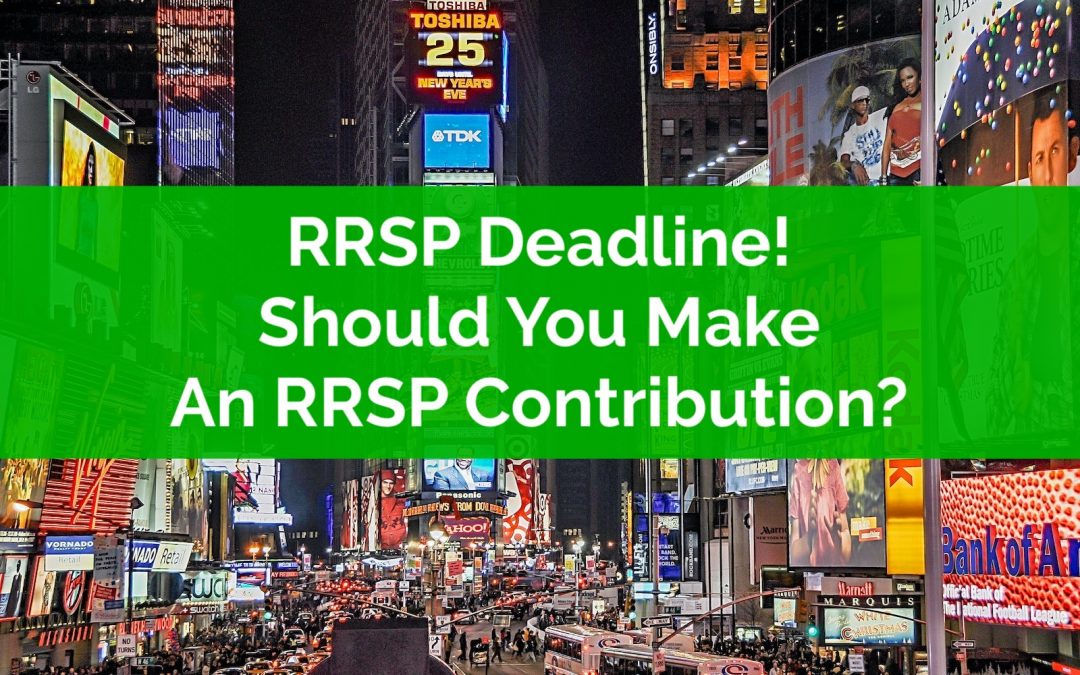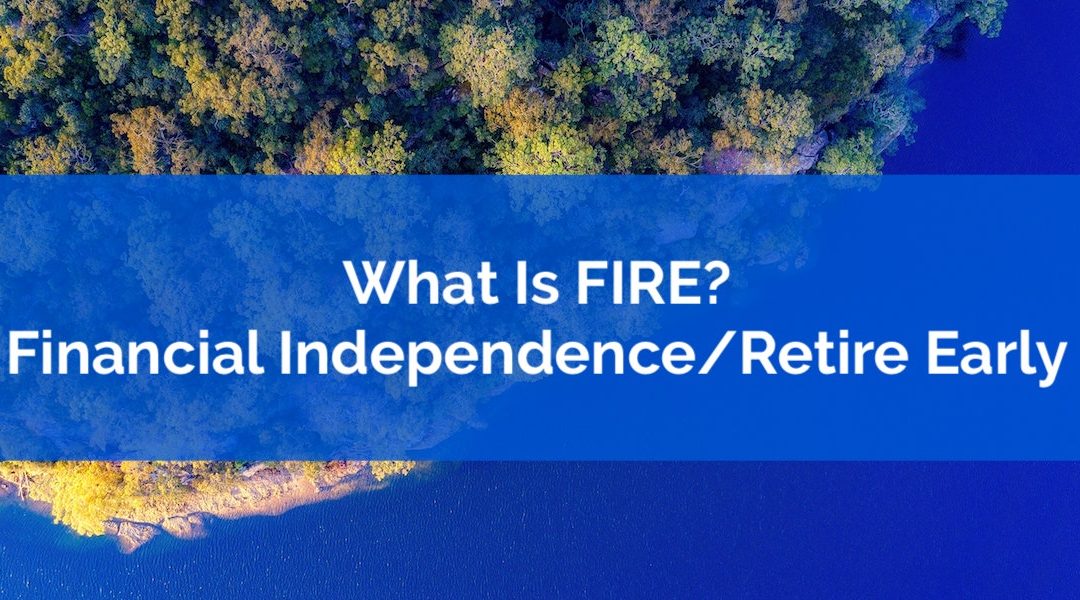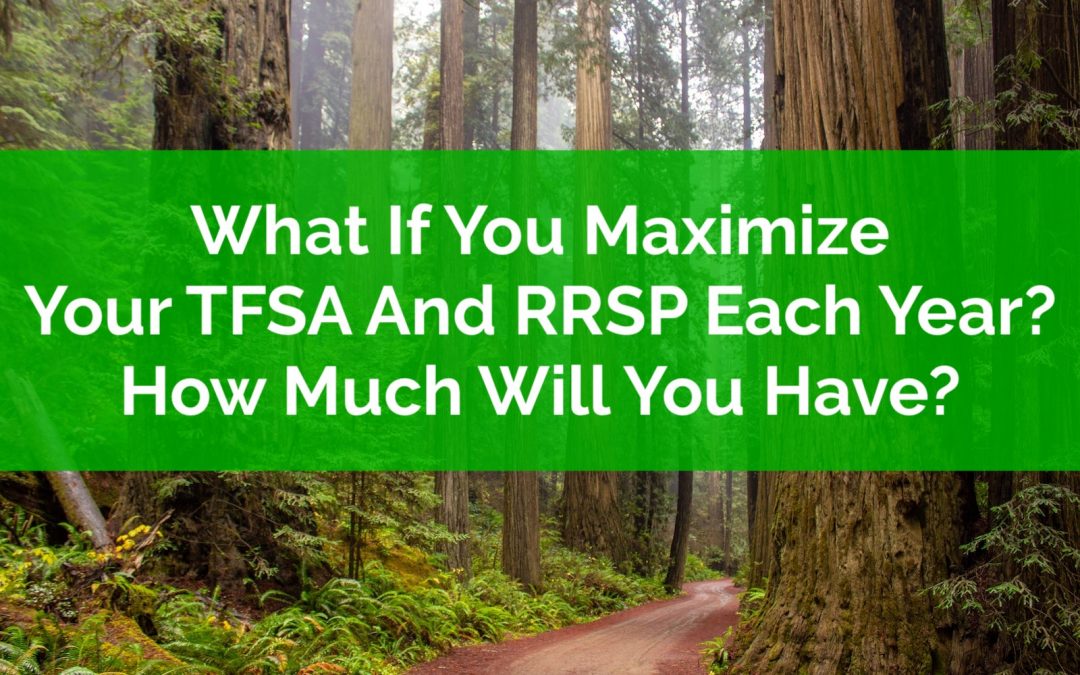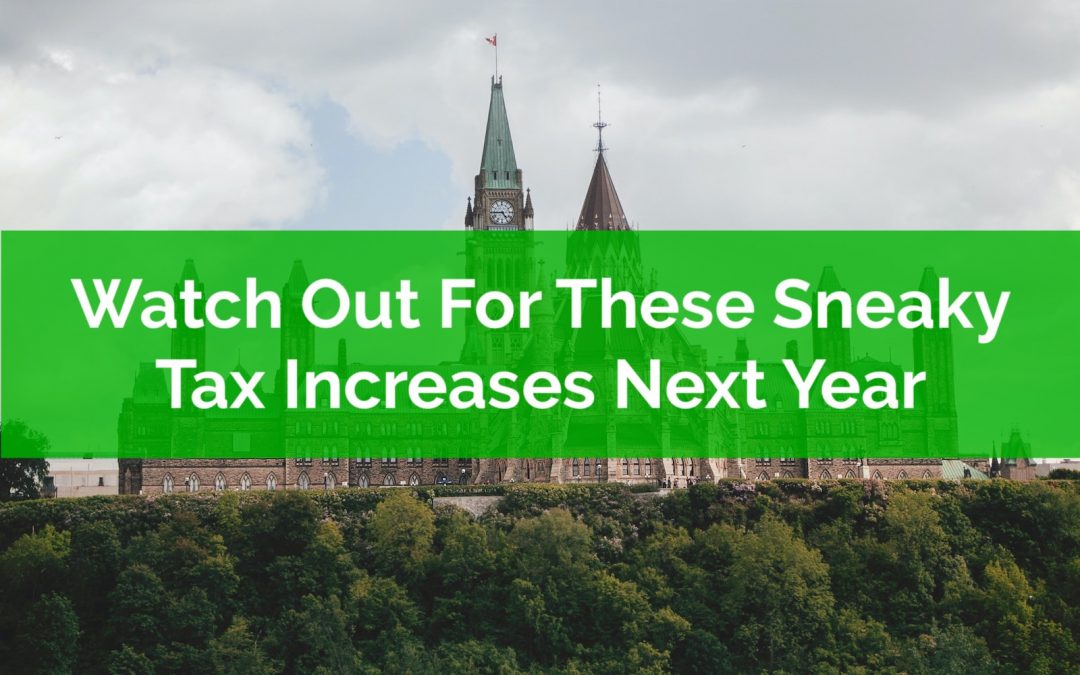
by Owen | Feb 6, 2023 | Financial Planning, Government Programs, Income, Retirement Planning, Tax Planning
The RRSP deadline is quickly approaching on March 1st, and you should get ready for advertisements selling you all sorts of RRSP products over the next few weeks. But despite what the advertisements suggest, should you actually make an RRSP contribution this year? Maybe, but maybe not.
In this blog post we’re going to highlight 5 reasons why you SHOULD NOT make an RRSP contribution this year.
As we build financial plans with clients, we sometimes come across situations where RRSP contributions were made to the detriment of the client. The client was in one or more of the situations below, but they were still advised to make RRSP contributions, or they were advised to split contributions between RRSP and TFSA, or sometimes they were not given any tax planning or government benefit advice at all.
Depending on the situation, this has cost a number of clients $10,000’s in extra income tax or reduced government benefits.
So, as the RRSP deadline approaches, watch out for these five situations where RRSP contributions may not be the best option, and always seek the advice of an unbiased advice-only financial planner to create a thorough income tax and government benefit strategy before making $1,000’s in RRSP contributions.

by Owen | Jan 30, 2023 | Behavioral Finance, Budgeting, Financial Goals, Financial Planning, Income, Investment Planning, Retirement Planning, Saving Money
You may have noticed a new term starting to creep into the mainstream financial media, that term is FIRE, and you might be wondering, “What the heck is FIRE? And how is it related to personal finances?”.
FIRE is an acronym that stands for Financial Independence/Retire Early. The basic idea is that if you pursue FIRE you can eventually stop working for money. You can be financially independent. You can do anything, retire early, keep working, volunteer, basically you can have more freedom.
The idea is that with enough savings/investments you’ll eventually reach the point where you can live off your investment income indefinitely. Once you reach this point you’re considered financially independent, you no longer NEED to work for an income, and can retire to a life of leisure (although you may choose to continue to work, change roles/professions, start a business, or volunteer).
While the concept of early retirement sounds amazing, it does take quite a bit of focus and determination to get there. To reach FIRE it requires a high savings rate, very high.
The typical financial advice given to the public is to save and investment approximately 20% of your net income (part of the simple 50/30/20 budget).
But to reach financial independence retire early you need to save more, much more. To reach FIRE you need to have a savings rate somewhere in the 30%-70%+ range. The higher your savings rate the faster you can stop working for money.
Because it’s easier to reach financial independence/retire early with a high savings rate, the path to FIRE is made easier with an above average income. With an above average income, basic expenses are easily covered, and it becomes more about managing lifestyle inflation. People who pursue FIRE try to limit their lifestyle inflation to maintain a high savings rate.
FIRE is also possible with a below average income, but requires a lot of creativity to reduce basic expenses. This may include house hacking, avoiding car ownership, and more extreme lifestyles. To reach financial independence/retire early with a low-income you need to live an alternative lifestyle.
Reaching FIRE is one of those extreme personal finance goals, it’s a goal that isn’t for everyone.
Even though the end goal sounds appealing, it requires a lot of hard work and dedication along the way. Reaching financial independence retire early means living way below your means for the rest of your life. It’s a lifestyle more than it is an end goal. It’s a lifestyle with a lot of freedom, but it’s also a lifestyle that requires a lot of control.
If you’re able to control your spending, and save a large % of your income, then reaching financial independence might only be a few years away.
To find out how far away you are from financial independence you can make a copy of our FIRE calculator and quickly calculate how many years it will take to reach FIRE in your situation. It will help you estimate how many years from FIRE you are based on your net-income, current expenses, and existing savings.
We’ve used our FIRE calculator to create four examples of how to reach FIRE.

by Owen | Jan 9, 2023 | Behavioral Finance, Budgeting, Financial Planning, Get Out Of Debt, Retirement Planning, Saving Money
When it comes to personal finance there are many different milestones and each one is its own individual achievement. Personal finance is full of achievements you need to ‘unlock’ to be successful. The more achievements you unlock, the more successful you’ll be at building wealth.
To ‘win’ the money game you need to hit a certain number of milestones along the way. Some achievements are required before you can move forward in the game. Others enable you to accelerate your wealth even faster. And then there are some achievements that are just interesting check points along the way.
Here are 30 personal finance achievements you need to unlock!
How many have you unlocked already?

by Owen | Jan 2, 2023 | Financial Planning, Income, Investment Planning, Retirement Planning, Tax Planning
There is never a bad time to start saving for retirement, but when is the BEST time to start planning? We’ve been told to start saving & investing for retirement from a very young age, the earlier the better, but when do you actually start planning for retirement itself? When do you start to think about income, expenses, taxes and government benefits during your retirement years?
Retirement can be very complex. When you reach retirement it’s pretty easy to have 6-10 different income sources, all with different tax treatments and claw back rules. One income source can be tax free while the other is fully taxed. Some retirement income is counted when calculating government benefit claw backs while others aren’t. These rules can make it difficult to estimate how much you can expect in retirement.
Retirees usually have their own source of retirement income from TFSAs, RRSPs, LIRAs, RRIFs, and non-registered accounts. Plus, they have government retirement programs like CPP, OAS and GIS. Then there are government benefits like the GST/HST credit and other senior’s benefits. And on top of that there are defined benefit pensions and annuities too.
With all these different income sources, it can get a little confusing. It can be difficult to know exactly how much can you expect in retirement income, how much will be lost to taxes, and how that matches up with retirement expenses.
As you get closer to retirement it can be extremely helpful to have a retirement plan in place. A plan that integrates all these different sources of income, calculates taxes and government benefits, and ensures you can reach your retirement spending goals. But can you reach a point where it’s too late to plan for retirement?
When is the best time to plan for retirement?

by Owen | Dec 19, 2022 | Budgeting, Financial Goals, Financial Planning, Investment Planning, Retirement Planning, Saving Money, Tax Planning
What if you maximize your TFSA and RRSP each year, how much money would you have in the future? If you just had one singular focus, how much could you accumulate? And would it be enough for retirement?
The TFSA and RRSP are two amazing tax advantaged accounts. They allow investments to grow tax free or tax deferred. They can be used to save and invest for retirement. Over time these contributions grow considerably with dividend income, interest income, and capital gains.
For the RRSP, new contribution room is based on 18% of the previous year’s employment income.
For the TFSA, new contribution is a set amount that grows with inflation in $500 increments.
Depending on your income level, maximizing both your RRSP and TFSA could mean a savings rate of 20%, or 25%, or 30% or even 35%+ at lower income levels.
That’s a high savings rate!
So, we can already anticipate that by maximizing the RRSP and TFSA every year we will probably end up with a sizable amount of financial assets, but how much exactly?
Is it $1 million?
Is it $2 million?
Is it $3 million or more?
In this blog post we’re going to have a little fun; we’re going to take a look at how much money you could accumulate if you just maximized new RRSP and TFSA contribution room each year.

by Owen | Dec 12, 2022 | Budgeting, Financial Planning, Government Programs, Retirement Planning, Tax Planning
Most governments try to avoid raising tax rates. It’s an unpopular move. It creates headlines. It causes a sharp drop in popularity. So how do governments earn more tax revenue? They increase taxes in a sneaky way. Some provincial governments have done this in the past and a few are still doing it now.
You may not have seen these tax increases reported in the media, but next year you may notice your tax bill increase, especially if you live in certain provinces.
If you find yourself with a little less cash flow next year, this might be why.
Not all provinces do this. But some provinces are sneakily increase tax next year. Some have been doing this same thing for years.
Are you in a province that is increasing taxes? Find the details at the end of the post.






